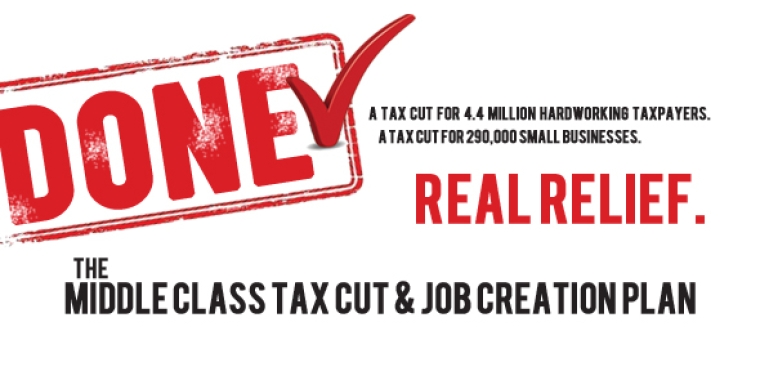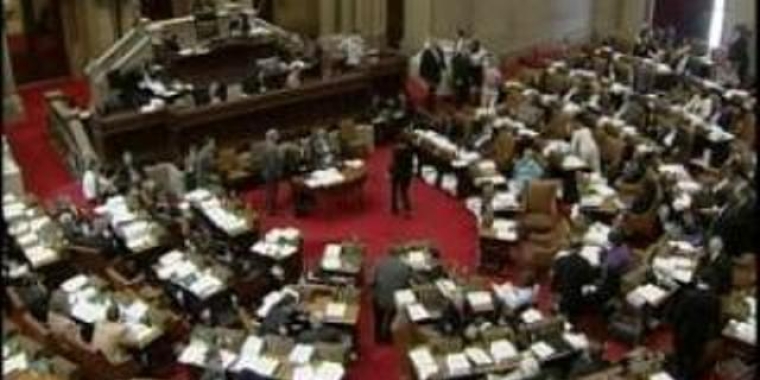
Senate passes $3.3 billion tax cut and job creation plan
George D. Maziarz
December 8, 2011
-
ISSUE:
- Taxes

The New York State Senate has passed the Middle Class Tax Cut and Job Creation Plan that will reduce taxes for millions of hardworking, middle-class taxpayers to their lowest levels in more than half a century. In addition, the comprehensive plan will help strengthen our economy and create new jobs by eliminating the job-killing MTA payroll tax for more than 78 percent of the small employers that pay the tax. The plan will provide a total of more than $3.3 billion in tax relief to individuals and businesses.
In addition the bill (S.50001, S.50002): cuts taxes paid by manufacturing companies; encourages job retention; invests in infrastructure improvements; addresses flood relief and recovery; eliminates tax indexing; and sets aside additional money in state reserve funds.
The Middle Class Tax Cut and Job Creation Plan is supported by major business organizations across the state including: The Business Council of New York State; Unshackle Upstate; the Long Island Association; the National Federation of Independent Businesses; the Partnership for New York City; and the New York Farm Bureau.
Highlights of the Middle Class Tax Cut and Job Creation bill include:
MIDDLE CLASS TAX CUT
Approximately 4.4 million middle-class taxpayers will receive $690 million in personal income tax relief, allowing them to save, spend and invest more of their hard-earned money. After these tax reforms are implemented, middle-class taxpayers will pay the lowest tax rate in more than 50 years.
MTA PAYROLL TAX REPEAL
This plan repeals the devastating MTA payroll tax for about 78 percent, or more than 704,000, of the business entities that currently pay it. This includes eliminating the tax for 290,000 employers with payrolls of less than $1.25 million; 415,000 self-employed taxpayers; and all public and non-public schools.
TAX CUT FOR MANUFACTURERS
The corporate tax rate on manufacturers outside of the MTA region will be cut in half, providing $25 million in tax savings, a major boost for job creation. Senate Republicans have long championed lower taxes for New York’s manufacturers as a way to create jobs.
ELIMINATE TAX INDEXING
Under the provisions of this bill, income brackets and the standard deduction will be adjusted for the rate of inflation, eliminating “bracket creep,” and providing about $440 million in tax savings over two years for every New Yorker that pays the personal income tax.
PERSONAL INCOME TAX SURCHARGE ELIMINATION
The bill eliminates the PIT surcharge, enacted by Democrats in 2009. Ninety-one percent of taxpayers currently impacted by the surcharge will receive a tax cut. Rates would revert back to the lower rate they paid prior to the enactment of the surcharge.
FLOOD RELIEF
$50 million in additional relief will be provided for areas affected by the recent flooding. A job retention tax credit will also be extended to businesses harmed by a natural disaster within the last year.
CAPITAL INVESTMENTS AND JOB CREATION
A new $1 billion infrastructure fund has been established to rebuild roads, bridges and other infrastructure, and encourage the creation of thousands of related jobs. These investments are expected to leverage $10 billion in capital investments. Projects immediately expedited through the infrastructure fund total $2.6 billion.
Specific investments by the infrastructure fund include replacing bridges, rehabilitating dams and flood control infrastructure, rebuilding water systems, renovating parks and projects that support regional economic development plans.
INNER-CITY YOUTH EMPLOYMENT
The bill includes $37 million in funds for job readiness training for inner-city youth and provides $25 million in tax credits for employers who hire unemployed youth.
SETTING ASIDE MORE MONEY IN RESERVES
The plan sets aside $1.5 billion, completely unspent and held in reserve for economic uncertainties and to help support: job creation; local government mandate relief; ensure funding for education and health care; and closure of budget gaps.
#####
Share this Article or Press Release
Newsroom
Go to NewsroomIs It Time for Term Limits?
May 7, 2009

Senator Maziarz on Shredd and Ragan
May 6, 2009
